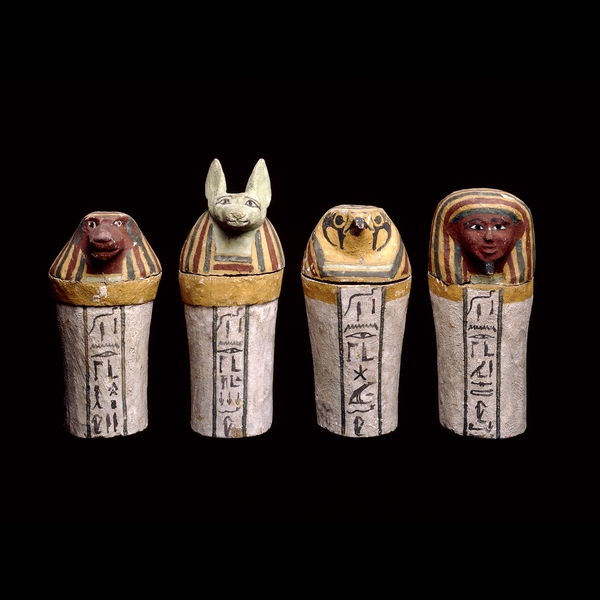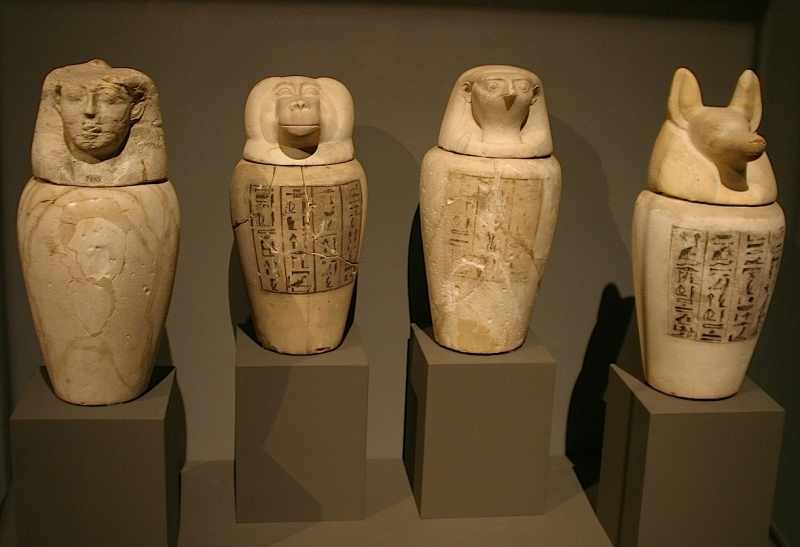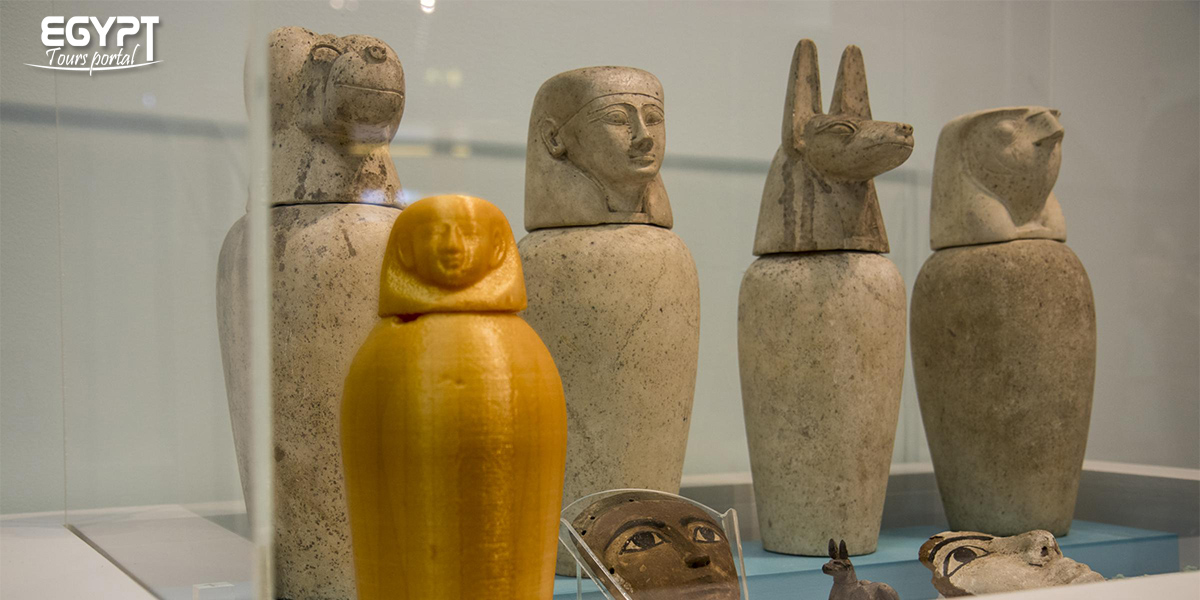
What were canopic jars in ancient Egypt and what was their appearance? in 2021 Canopic jars
Play this game and discover why canopic jars were often buried with mummified bodies in ancient Egypt.

Canopic Jars An Integral Part of the Ancient Egyptian Mummification Process Laura Morelli
Ancient Egyptian human remains have been of interest in the fields of both medical and Egyptological research for decades. However, canopic jar holders for internal organs (liver, lungs, stomach, intestines) of Egyptian mummies appear to be but a very occasional source of data for such investigations.

What Are Canopic Jars Canopic Jars Egyptian Canopic Jars
Canopic jars were ritual vessels containing internal organs removed from the deceased's body during mummification. Their name, "canopies," comes from Canopus, an ancient Egyptian city in the Nile Delta, where they were first discovered.

Canopic Jars Ancient Egypt Facts for Kids
Canopic jars are a kind of receptacles that were used by the ancient Egyptians to contain the internal organs (lungs, stomach, intestines, and liver) of a dead person. It was believed that a person needed her/his body to attain the afterlife.

Canopic Jars Ancient Egypt 3,500 B.C. Pinterest Ancient egypt
What were Canopic Jars used for in ancient Egypt? Canopic jars are the jars that were used to store the mummified organs separately from the body itself. This was a very important part of the mummification process; as Egyptians were one of the first civilizations to believe in an afterlife.

Ancient Egyptian Canopic Jars, burned soap stone by on Etsy Egyptian Mask, Egyptian
Learn about the canopic jars and why the ancient Egyptians buried certain organs separate from the deceased's body. May 19, 2023 • By Sebastian Maydana, PhD History, MA Archaeological Studies, BA History Canopic Jars of Isetemkheb, Third Intermediate Period (ca. 1069-945 BCE), via the Egyptian Ministry of Tourism and Antiquities

ArtStation Egyptian Canopic Jar, Pogar Marius Canopic jars, Egyptian goddess art, Egyptian art
This is the case for ancient Egyptian canopic jars, which were used in the funerary setting in ancient Egypt between 2700 and 300 B.C. to separately store and preserve those internal organs that needed to be removed from the body in the course of the mummification procedure to avoid putrefaction, yet were considered essential for the afterlife.

Egyptian Canopic Jars Egyptians Pinterest Ancient egypt
This is the first‐ever recorded evidence of ancient human DNA found in Ancient Egyptian canopic jars and the first associated metagenomic description of bacterial taxa in these funerary artifacts. Objectives

Canopic Jars What Are Canopic Jars Used For Egyptian Canopic Jars
Canopic Jars were used by the ancient Egyptian during the rituals of mummification processes. These were used as containers in which to hold the internal organs of the deceased that was going to be mummified. The ancient Egyptians before mummifying their pharaohs and dead took out the internal soft organs.
Graham's Potted History Replica Egyptian Canopic Jars
Egyptian Canopic Jars: A Portal to the Afterlife's Mysteries Dani Rhys December 12, 2023 Table of Contents Mortuary rituals were a fundamental part of ancient Egyptian culture and consisted of several steps in a long process. Within the mummification process, the use of Canopic Jars was a crucial step.

Set of 4 Egyptian Canopic Jars Ancient Egypt Burial Ceremony eBay
A set of four canopic jars was an important element of the burial in most periods of Ancient Egyptian history. Canopic jars were containers in which the separately mummified organs would be placed. The best known versions of these jars have lids in the shape of the heads of protective deities called the four Sons of Horus.

Canopic Jars in 2021 Canopic jars, Ancient egyptian artifacts, Egyptian artifacts
Research Shop Search The Collection Egyptian Art Canopic Jar Late Period 664-525 BC ? On view at The Met Fifth Avenue in Gallery 127 Canopic jars were made to contain the organs that were removed from the body in the process of mummification: the lungs, liver, intestines, and stomach.

Ancient Egyptian Authentic Large Canopic Tomb Jars // Set Of 4 // Museum Display RARET
Canopic jars are containers that were used by the ancient Egyptians during the mummification process, to store and preserve the viscera of their owner for the afterlife. They were commonly either carved from limestone or made of pottery. [1]

Ancient Egypt Canopic Jars Images
The ancient Egyptians believed that a dead person would need their organs in the afterlife. For this purpose, four major organs were taken from the body during the mummification process and stored in canopic jars. Each pot contained one organ; these were the liver, lungs, stomach, and intestines.

Image result for egyptian canopic jars Canopic jars, Ancient egypt, Ancient egypt projects
Set of glazed composition canopic jars of Psamtek: these jars have been fashioned from what was originally dark green blue glazed composition in order to contain Psamtek's mummified internal organs which had been removed during the embalming process. Each lid bears the head of the relevant Son of Horus, the four deities who were believed to protect the jars' contents. The falcon-headed.

Canopic jar representing Hapy. Banded alabaster. Egypt, Late Period, XXVIth XXXIst Dynasty
Free Shipping Available. Buy Ancient Egypt Canopic Jar on ebay. Money Back Guarantee!